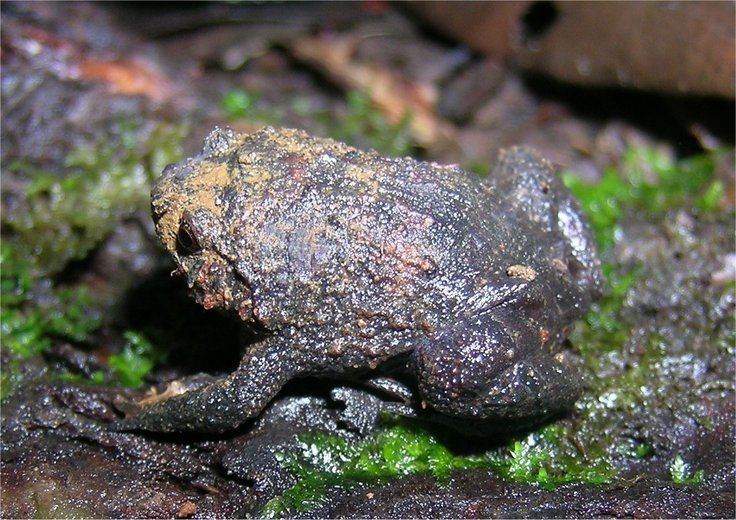Class Lissamphibia Suborder Neobatrachia | Phylum Chordata Order Anura | |
 | ||
Rhombophryne is a genus of microhylid frogs endemic to Madagascar. It is currently estimated to include more than 21 species, but only 17 of these are currently described. At least one species group, the R. serratopalpebrosa species group, is recognised, containing members of the genus that possess superciliary spines (spines above the eyes).
Contents
Taxonomy
The genus Rhombophryne was monotypic until 2005, containing just R. testudo Boettger, 1880. However, in 2005 Andreone et al. showed that the genus Plethodontohyla was paraphyletic with respect to this genus. Several species were therefore transferred to this genus by Frost et al. in 2006, Glaw and Vences in 2007, and Wollenberg et al. in 2008. In 2015/2016, Peloso et al. re-analysed the genetic relationships of the Microhylidae using partial genomic data. They proposed the synonymy of Stumpffia with Rhombophryne because these genera were found to be paraphyletic. However, in 2016 Scherz et al. re-analysed their data with new data—including osteology and external morphology. They found strong support for these groups being ecologically distinct, non-synonymous sister taxa. To accommodate this, however, they established a new genus, Anilany for a species that would otherwise have rendered Stumpffia paraphyletic.
Ecomorphology
Members of the genus Rhombophryne are ecologically and morphologically diverse. The type species, R. testudo shows many specialisations to burrowing, such as a short head, short limbs, and large metatarsal tubercles, as do its two closest relatives, R. matavy and R. coudreaui. Most other species have a stout body shape which may suggest partially burrowing habits as well. Rhombophryne minuta and R. longicrus by contrast have unusually long limbs, and it has been argued that they probably are more terrestrial than the other members of the genus.
Reproductive Ecology
The mating habits of most species of Rhombophryne are not known. It is likely that all members of this genus engage in parental care, which is common to most members of the Cophylinae. Two adult R. testudo individuals were found together with 18 putative offspring in a burrow by a stream at the edge of Lokobe Reserve on Nosy Be, at the end of the dry season. This is the only direct evidence of reproductive behaviour in this genus. So far, the advertisement calls of seven species have been published: R. alluaudi, R. botabota, R. minuta, R. mangabensis, R. matavy, R. testudo, R.nilevina, and R. coronata.
